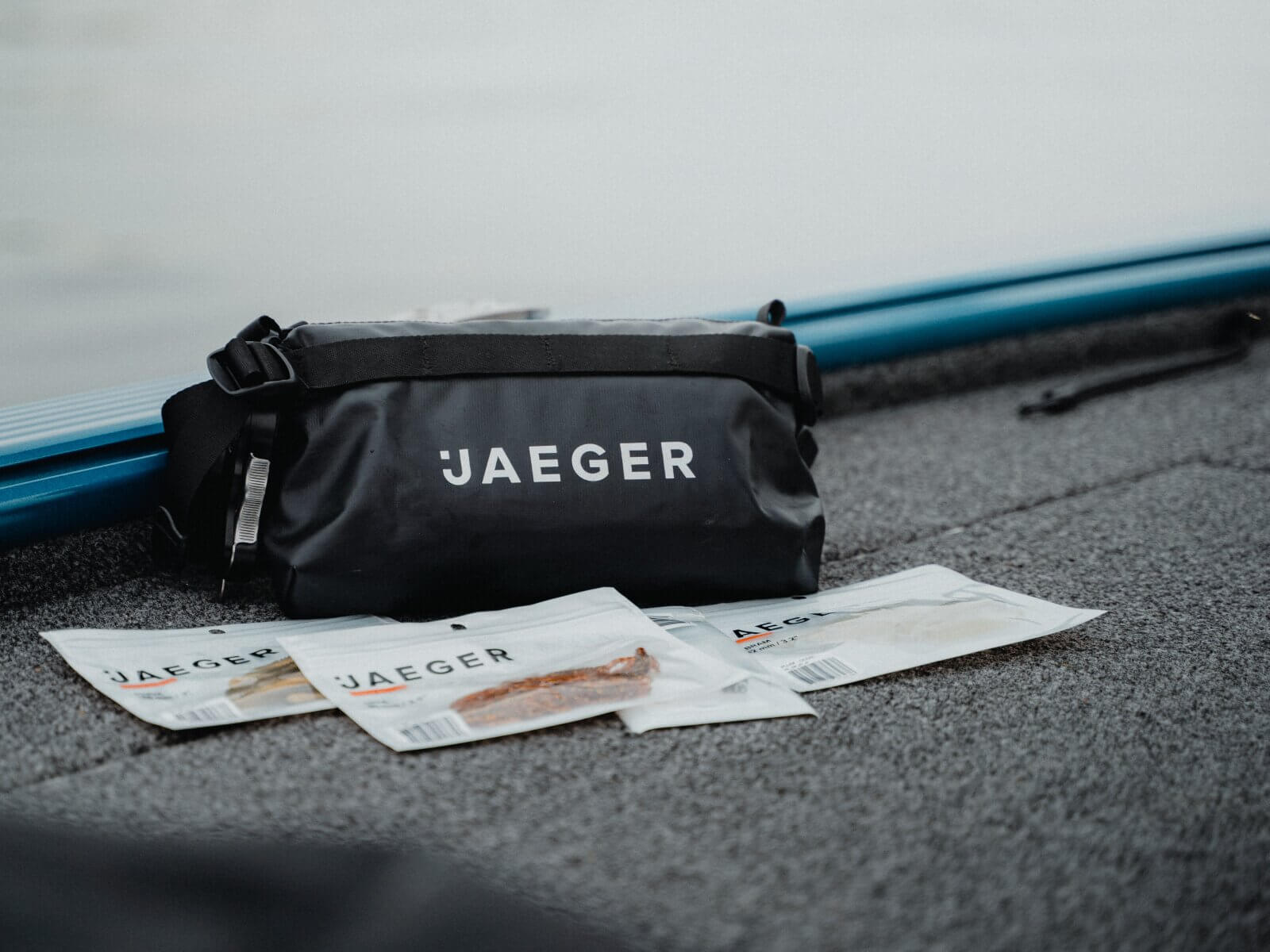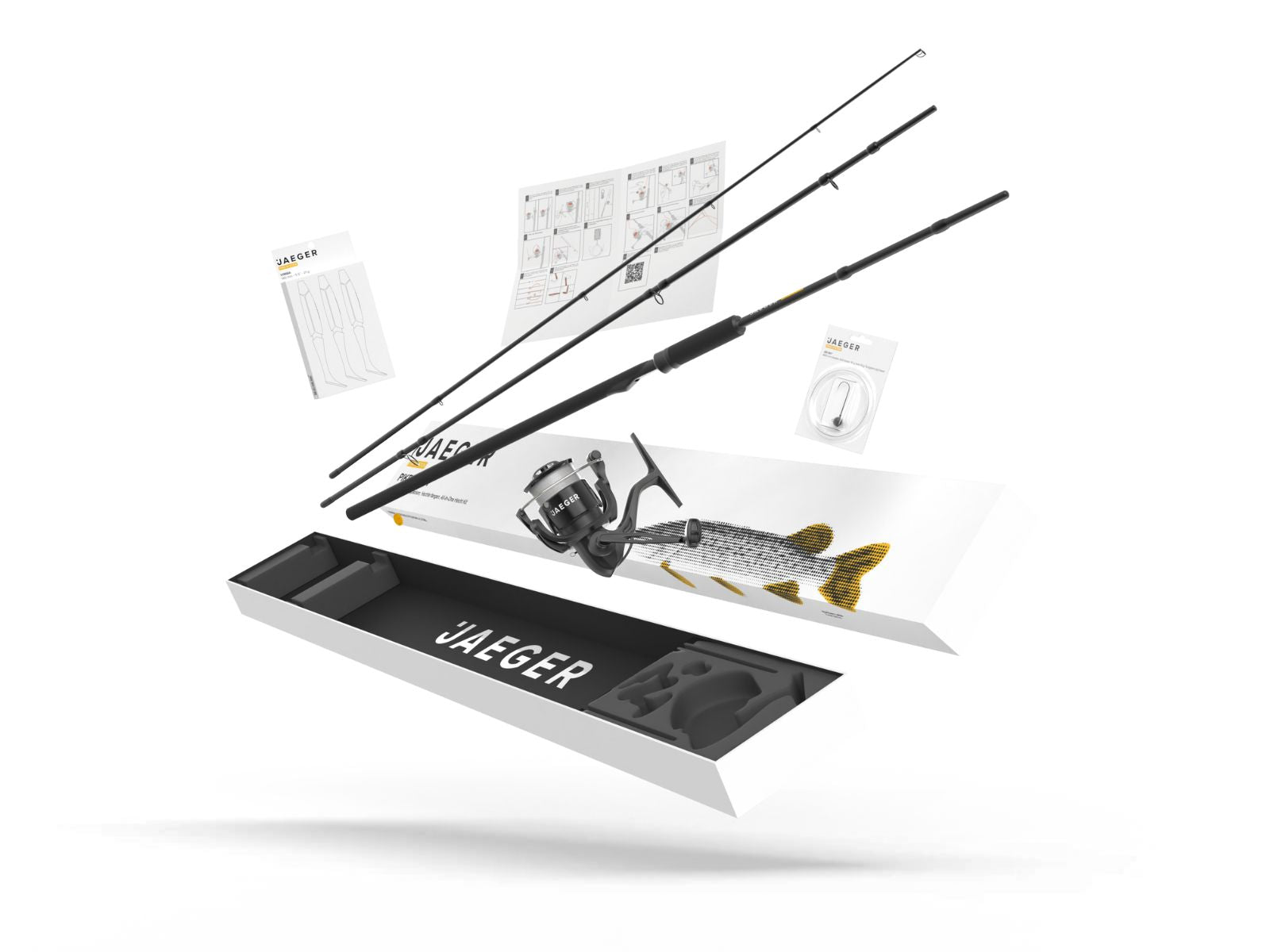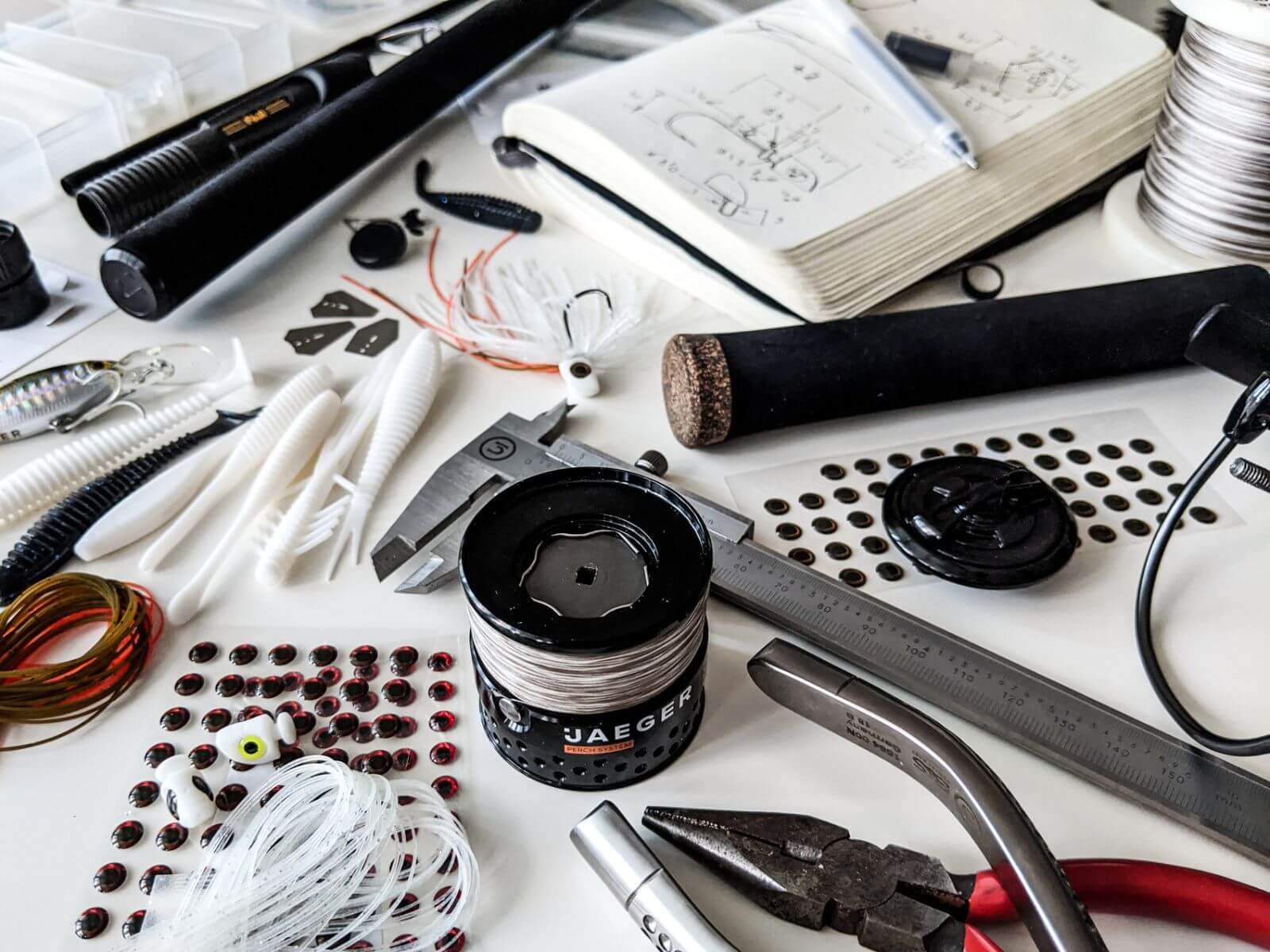Article: What’s the Best Fishing Line for Bass, Pike & Trout?

What’s the Best Fishing Line for Bass, Pike & Trout?
The wrong fishing line can cost you the fish of a lifetime. Imagine hooking into a heavy bass under thick cover, feeling the surge of a trophy pike, or watching a trout explode on your lure, only to lose it because your line gave out. Every angler has a story like that, and it always comes back to one simple truth. Your line is the most important connection between you and the fish.
Choosing the best fishing line isn’t just about strength. It’s about matching line type, pound test, and setup to your target species and conditions. The right line lets you cast farther, feel more bites, and land fish with confidence. The wrong one? It turns your personal best into a lost memory.
In this guide, we’ll break down the different types of fishing line, compare their pros and cons, and show you exactly what works best for bass, pike, and trout. From braid to fluorocarbon to monofilament, you’ll get a clear answer for each scenario plus pro tips to keep your spools in top shape.
Best Fishing Line for Bass, Pike & Trout – Everything at a Glance
- • Why the right fishing line makes or breaks your catch
- • Monofilament, Fluorocarbon & Braided line compared
- • Best setups for bass, pike & trout (with line strength)
- • Quick comparison table: line type vs species
- • Pro tips on fishing line storage, spooling & replacement
What types of fishing lines are there?
When it comes to fishing line, you’ve got three main options: monofilament, fluorocarbon, and braided line. Each has strengths and weaknesses, and the best choice depends on the fish you’re chasing and the water you’re fishing. Let’s break it down.
Monofilament (Mono)
Simple, affordable, and still a favorite for many anglers.
-
Pros: Easy to handle, stretches (good shock absorption), floats (great for topwater and bobber fishing).
-
Cons: Lower sensitivity, memory (line coil), weaker abrasion resistance.
-
Best use: Beginners, trout fishing with bait, topwater bass lures.
Fluorocarbon (Fluoro)
The stealth option—nearly invisible underwater.
-
Pros: Abrasion-resistant, sinks, very low visibility in clear water, sensitive.
-
Cons: Stiffer, can be harder to manage on spinning reels, more expensive.
-
Best use: Leader material, finesse setups, clear water bass and trout fishing.
Braided Line (Braid)
The powerhouse of fishing lines.
-
Pros: Extremely strong for its diameter, zero stretch (max sensitivity), casts far, lasts long.
-
Cons: Visible in clear water, can dig into the spool, needs a leader in most cases.
-
Best use: Heavy cover bass fishing, pike fishing, situations where strength and control matter.
What's The Best Fishing Line for Bass
Bass fishing is all about versatility. You’ll fish in everything from clear, open lakes to weed-choked ponds and heavy cover. That means your line has to match the situation. For most anglers, the best fishing line for bass fishing is braided line in the 30–50 lb range, paired with a fluorocarbon leader. The braid gives you the strength and sensitivity to set the hook hard, even in heavy cover. The fluoro leader keeps things invisible when bass get picky in clear water.
-
Standard setup (spinning or baitcaster): 30–50 lb braid main line + 12–20 lb fluorocarbon leader.
-
When to go full fluorocarbon: In ultra-clear lakes or when finesse fishing with soft plastics. Use 8–12 lb straight fluorocarbon.
-
When to use mono: Topwater lures like poppers and walking baits—mono floats, which helps with action.
So what type of line is best for bass fishing?
The best line for bass fishing is 30–50 lb braided line with a fluorocarbon leader for most setups. Use straight fluorocarbon (8–12 lb) in clear water and monofilament for topwater baits.

Texas Rig 101 – How to Rig, Fish & Catch More Bass
Want to level up your bass fishing game? The Texas Rig is a must-know setup. Learn how to rig it, fish it, and hook more bass in any condition – from heavy cover to open water finesse.
➤ Read the Full GuideBest Fishing Line for Pike
Pike are aggressive predators with razor-sharp teeth and a habit of striking hard. If you go after them with the wrong line, you’ll lose lures fast and probably your fish, too. Strength and abrasion resistance are non-negotiable here for pike fishing.
What size line for bass and pike?
The best fishing line for pike is a 30–50 lb braided line as your main setup. Braid gives you the power to muscle big fish out of weeds and withstand their headshakes without breaking. But because pike can bite straight through braid, you’ll always need a leader.
-
Standard setup: 30–50 lb braid main line + steel leader or heavy fluorocarbon leader (40–60 lb).
-
Steel leader: The safest choice when pike teeth are a concern—prevents bite-offs.
-
Fluoro leader (40–60 lb): Stealthier than steel, useful in clear water. Make sure it’s abrasion-resistant and thick enough to survive multiple strikes.

PIKE GO KIT – All-in-One Pike Fishing Combo
★★★★★ (107 reviews)
Built for power, abrasion resistance and control: dialed-in braid + leader, tough hardware and hand-picked pike lures. Ready to fish straight out of the box.
Best Fishing Line for Trout
Trout are a whole different game compared to bass and pike. They’re cautious, easily spooked, and often live in clear streams or lakes where visibility matters most. That’s why finesse and subtlety are key.
What is the best line for trout and bass fishing?
The best fishing line for trout is usually light fluorocarbon in the 2–6 lb range. It’s nearly invisible underwater and offers enough abrasion resistance to handle rocky streams. For anglers who want extra casting distance or better bite detection, a thin braid with a long fluorocarbon leader is also a great setup.
-
Clear water, finesse setups: 2–6 lb fluorocarbon for spinners, spoons, and natural presentations.
-
Braid + fluoro leader: High-vis braid (8–10 lb) paired with a 4–6 lb fluorocarbon leader for longer casts and better strike sensitivity.
-
When to use mono: In stained or moving water, especially with bobbers, live bait, or powerbait rigs. Mono floats and helps with natural bait presentation.
Is 10 lb line too much for trout?
Yes, 10 lb line is usually too heavy for trout fishing, especially in clear water. Stick with 2–6 lb fluorocarbon for the best results.

Best Trout Lures: Spinner, Spoon or Softbait?
Confused about which lure works best for trout? This guide compares spinners, spoons and softbaits – with clear tips on when to use each one and how to maximize your chances on streams, rivers and lakes.
➤ Read the Full GuideComparison: Best Fishing Line for Bass, Pike & Trout
By now you’ve seen how different species demand different line choices. Bass need versatility, pike require brute strength plus bite protection, and trout call for finesse and invisibility. To make it easy, here’s a side-by-side comparison of the best setups.
Fishing Line Maintenance & Longevity
Even the best fishing line won’t perform forever. UV rays, water absorption, and repeated casting slowly wear it down. If you want consistent performance and fewer heartbreaks on the water, regular maintenance is key.
Spooling the Right Way
When spooling your reel, make sure the line comes off the filler spool in the same direction it goes onto the reel spool. This reduces line twist and “springy” memory. If you’re spooling braid, add a short backing of mono first so it doesn’t slip on the spool.
Proper Storage
Line is sensitive to sunlight and heat. Store your spools in a cool, dry place away from direct UV exposure. A tackle bag, drawer, or even a simple Ziploc bag works. If you want to go the extra mile, use a dedicated fishing line spool case to keep dust and moisture out.
When to Replace Your Fishing Line?
-
Monofilament: Every 1–2 seasons (sooner if exposed to lots of sun).
-
Fluorocarbon: Every 1–2 seasons or when you notice nicks.
-
Braided line: Can last multiple seasons, but replace when it starts fraying or fading.
Pro tip: run your fingers down the line after each trip—if you feel rough spots, it’s time to cut back or replace.
Tools That Help
A fishing line stripper makes it easy to remove old line quickly, while a line spooler saves time when re-spooling reels evenly.

Fishing Gear Maintenance: Keep Your Combos in Top Shape
Clean reels, refresh your line, and make sure your rods last season after season. This guide gives you a full checklist to keep your tackle ready whenever the fish are biting.
➤ Read the Maintenance GuideFishing Line Care – Quick Tips
- • Spool line in the right direction to avoid twist
- • Store spools in a cool, dry, UV-protected place
- • Replace mono/fluoro every 1–2 seasons, braid when frayed
- • Use a line stripper & spooler for quick swaps
- • Always check for nicks or rough spots after each trip
FAQ
What is the strongest fishing line?
The strongest fishing line is braided line. It offers incredible tensile strength for its thin diameter and has zero stretch, making it ideal for big fish and heavy cover. Some heavy-duty braids exceed 100 lb test and are used for saltwater giants.
Does the color of fishing line matter?
Yes, fishing line color can matter. In clear water, low-visibility fluorocarbon is best. In stained or muddy water, high-vis braid or mono can help you track your line without spooking fish. Match color to water clarity and your presentation style.
Best fishing line for a spinning reel?
For spinning reels, use braid (10–20 lb) with a fluorocarbon leader. This combo casts far, reduces line twist, and gives great sensitivity. For finesse trout setups, go lighter with 4–6 lb fluorocarbon.
Best fishing line for a baitcaster?
The best fishing line for baitcasters is braid (30–50 lb). It handles power fishing, heavy cover, and strong hooksets. Pair it with a fluorocarbon leader for clear water or use straight fluorocarbon (12–20 lb) for crankbaits and jigs.
Fishing line weights explained
“Line weight” or “pound test” indicates how much force the line can handle before breaking.
-
Light line (2–8 lb): Trout, panfish, finesse setups.
-
Medium line (10–20 lb): Bass, walleye, inshore saltwater.
-
Heavy line (30–50 lb+): Pike, musky, catfish, offshore species.


Leave a comment
This site is protected by hCaptcha and the hCaptcha Privacy Policy and Terms of Service apply.